Orinese Phi
| Orinese Phi | |
|---|---|
| Fī Erwaniyesi (Oharic) | |
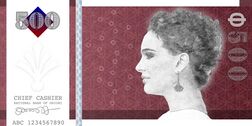 500 Phi banknote of the 2018 series | |
| ISO 4217 | |
| Code | ORP |
| Exponent | 2 |
| Denominations | |
| Subunit | |
| 1/100 | Phili |
| Plural | The language(s) of this currency do(es) not have a morphological plural distinction. |
| Symbol | Φ |
| Phili | 𝞅 |
| Banknotes | |
| Freq. used | Φ10, Φ50, Φ100, Φ500 |
| Rarely used | Φ1000 |
| Coins | |
| Freq. used | 𝞅5, 𝞅10, 𝞅50 Φ1, Φ5 |
| Rarely used | 𝞅1 |
| Demographics | |
| Date of introduction | 1893 |
| Official user(s) | |
| Unofficial user(s) | |
| Issuance | |
| Central bank | National Bank of Orioni |
| Website | www.bank.gov.io |
| Printer | Royal Orinese Banknote Printing Corporation |
| Mint | Royal Orinese Mint |
| Valuation | |
| Inflation | 1.2% (December 2020) |
| Source | National Bank of Orioni |
| Method | CPI |
The Orinese Phi, (Oharic: Fī Erwaniyesi, symbol: Φ; ISO code: ORP; also abbreviated as OP) is the official currency of Orioni as well as accepted tender in several countries on Eurth. The National Bank of Orioni is responsible for issuing notes and coins in the nation's currency. The currency was adopted in 1893 and is subdivided into 100 Phili. One Phi is subdivided into 100 Phili (symbol: 𝞅). Altogether, there are eleven denominations of the Phi, with the smallest being the 1 Phili coin, which is valued at one hundredth of a Phi. Other coins include the 5, 10 and 50 Phili and the 1 and 6 Phi coins. The Orinese Phi is the world's fifth-largest reserve currency on Eurth in February 2021.
History
The history of the Orinese Phi as a unit of currency has a storied past that spans several centuries. Although the currency in its present form was only introduced in 1893, the roots of Orinese monetary systems can be traced back to ancient times.
Historically, the Orinese began their foray into the realm of monetary systems later than the neighboring Aroman Empire. It wasn't until the late 2nd century BCE that they began producing their own distinct round currency. Prior to this, the concept of a currency as we understand it today was still a burgeoning idea. Drawing parallels with other ancient civilizations, the Orinese primarily used coins as mediums to trade valuable metals and to standardize the value of goods. An indication of the widespread nature of trade is the discovery of Medanese perfumes as distant as Aroma, hinting at the early establishment and significance of the Pearl Road for trade.
Delving deeper into their ancient monetary practices, the earliest forms of Orinese currency were not minted coins in the typical sense. Starting from the 5th century BCE, there's evidence that suggests the Orinese produced unique cast bronze money. Rather than adhering to the conventional shapes of the time—round or square—these coins intriguingly took on the form of leaping dolphins. The decision to adopt the ingot casting method in this distinctive dolphin form over traditional shapes is believed to have been influenced by religious beliefs. Legends attribute the dolphin shape to sacrificial tokens used in the Temple of Hierapolis. However, these bronze dolphin-shaped ingots, despite their cultural and historical significance, were not practically suited for everyday transactions due to their unwieldy size. Despite their impracticality, their production persisted until 218 BCE.
The initial currencies of Orioni were a reflection of the socio-economic conditions of the time, wherein trade and barter played crucial roles. These early currencies served as both a medium of exchange and a representation of wealth, indicating the value of goods and services in the region. Before the adoption of a decimal system, Orinese monetary calculations were intricate, relying on a complex system of weights and measures. This system, while functional, often led to confusion in trade and was not conducive to rapid economic growth. Over the centuries, the need for a standardized and efficient monetary system became apparent. The evolution of the Orinese currency was marked by various stages, from barter systems to the introduction of tangible coinage, and subsequently, the shift towards more intricate designs and materials, culminating in the minted coins that preceded the Phi.
The transition to the modern Phi in 1893 was a significant milestone in Orioni's monetary history. This change streamlined trade, commerce, and economic planning. The Phi was introduced as a response to the need for a more unified and standardized currency that would facilitate both local and international trade. As the Orioni Empire expanded its territories and influence, the Phi became more than just a domestic currency. It started to gain acceptance in different parts of the empire, solidifying its position as a dominant and reliable currency. This acceptance was instrumental in facilitating trade routes, boosting commerce, and establishing economic ties across the empire.
Administration
The National Bank of Orioni dictates and oversees all monetary policy for the currency. The Royal Orinese Mint manages the minting of all coins. The Royal Orinese Banknote Printing Corporation manages the printing of all banknotes. This currency is the only acceptable legal tender for transactions within the country.
Characteristics
One Phi is subdivided into 100 Phili. Unlike other countries there are no denominations of 2, 20, 200, etc. The 1-Phili coin is rarely used due to its low value, and some stores may no longer accept it. The Φ1000 bill is rarely used because it is often associated with crime and money laundering. Criminals who make a lot of money, especially drug dealers, prefer the large denomination: it is easier to transport Φ1000 notes compared to for example Φ50 or Φ100 notes.
Coins
The Royal Orinese Mint manages the minting of all coins. In 2018, the following coins were introduced in connection with a redesign.
| Image | Value | ∅ | Description | |
|---|---|---|---|---|
| Obverse | Reverse | |||
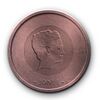 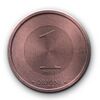
|
𝞅1 | 20 mm | Profile of Empress Joni I | Denomination and year |
 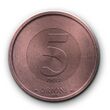
|
𝞅5 | 22 mm | Profile of Empress Joni I | Denomination and year |
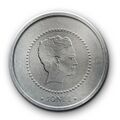 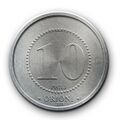
|
𝞅10 | 24 mm | Profile of Empress Joni I | Denomination and year |
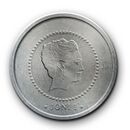 
|
𝞅50 | 26 mm | Profile of Empress Joni I | Denomination and year |
 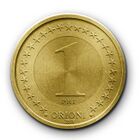
|
Φ1 | 28 mm | Profile of Empress Joni I | Denomination and year |
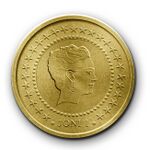 
|
Φ5 | 28 mm | Profile of Empress Joni I | Denomination and year |
Banknotes
The Royal Orinese Banknote Printing Corporation manages the printing of all banknotes. In 2018, the following banknotes were introduced in connection with a redesign.
| Image | Value | Year | Dimensions (millimetres) |
Main colour | ||
|---|---|---|---|---|---|---|
| Obverse | Reverse | |||||

|
File:ORP 10 reverse (2018 issue).jpg | Φ10 | 2018 | 120 × 60 mm | Green | |

|
File:ORP 50 reverse (2018 issue).jpg | Φ50 | 2018 | 130 × 65 mm | Orange | |

|
File:ORP 100 reverse (2018 issue).jpg | Φ100 | 2018 | 140 × 70 mm | Blue | |

|
File:ORP 500 reverse (2018 issue).jpg | Φ500 | 2018 | 150 × 75 mm | Red | |

|
File:ORP 500 reverse (2018 issue).jpg | Φ1000 | 2018 | 160 × 80 mm | Grey | |
